Name MS Selandia Owner East Asiatic Company Completed February 1912 Length 113 m | Namesake Sjælland Yard number 276 Launched 4 November 1911 Beam 16 m | |
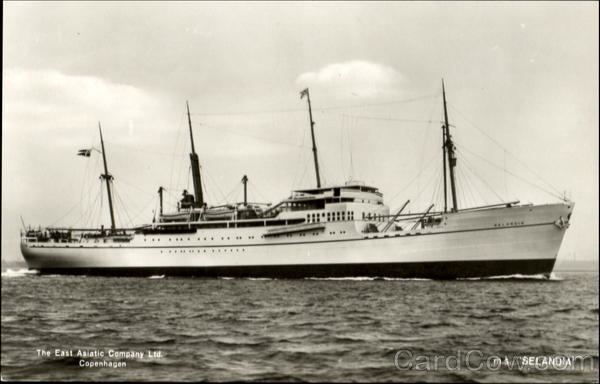 | ||
Route between Scandinavia, Genoa, Italy, and Bangkok, Thailand | ||
MS Selandia was the most advanced ocean-going diesel motor ship in her time.
Contents
"Selandia" is the Latin name for the Danish island of Sjælland. The first Selandia (1912) was ordered by the Danish trading firm East Asiatic Company for service between Scandinavia, Genoa, Italy, and Bangkok, Thailand.
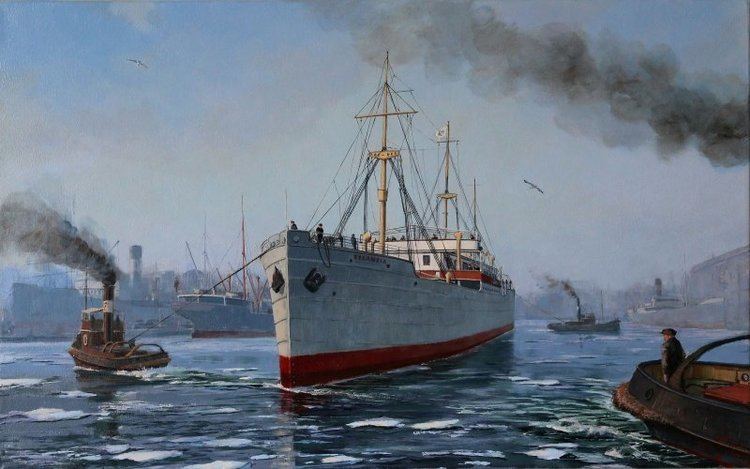
Construction

Selandia and sister ship Fionia were results of negotiations between the Danish East Asiatic Company's president, Etatsraad Andersen, and Burmeister & Wain shipyards, Copenhagen, Denmark which had been introduced to the concept of marine diesel engines by engineer Ivar Knudsen who led the ship's development. Negotiations were also underway for the Scottish firm of Barclay, Curle & Company to build Diesel motors on the Danish system and a third ship, to be a counterpart of Selandia and Fionia, named Jutlandia.
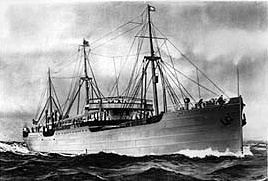
She was built at Burmeister & Wain in Copenhagen, and launched on 4 November 1911 before embarking on her maiden journey from Copenhagen to Bangkok on 22 February 1912. Selandia did not have a funnel; instead exhaust from her engines escaped through exhaust ports in the aft mast.
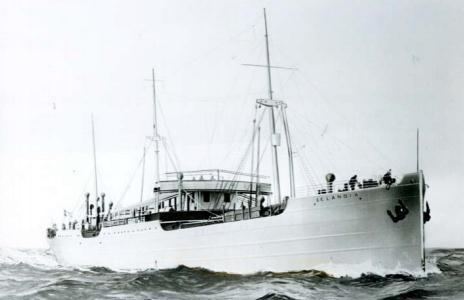
Built for cargo and passenger carriage, Selandia had "very ample and rather luxurious" cabins for 20 first class passengers, single-berth cabins of "exceptional size, with toilet and bath for every two cabins, and an extra feature is the servants' rooms, arranged in connection with private cabins."
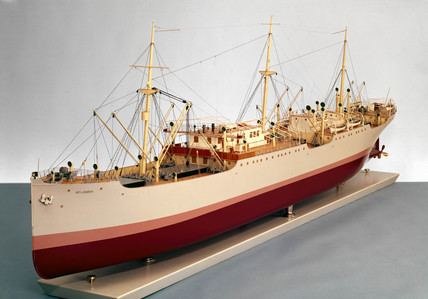
She is frequently referred to as "the world's first large ocean-going diesel-powered ship", an "experiment," as previous powered vessels were driven by steam. The new motorships were described as "smokeless" and caused some to describe them as "phantom ships" with an incident during the trials for "Selandia" in which a captain of another ship ignored warnings and ran across her bows because he "saw no smoke." The ship attracted curious crowds from London to San Francisco that were often skeptical of a deep ocean ship not powered by the commonly used triple expansion steam engine; yet within ten years there were over 2,000,000 deadweight capacity tons in commerce powered by diesel engines and British experts calculated the motorship had a 40% advantage in fuel costs, with fewer crew and steadier sea speeds.
There is evidence to say that the engine installation in Selandia was a world-first on numerous points, but she was not the world's first diesel-driven ocean-going ship, having been beaten to it by the Dutch "Vulcanus" two years earlier.
Service
Selandia the largest and most advanced diesel-driven ship at the time of her maiden voyage by way of Aalborg to London in January 1912 after completing trials in Øresund. On arrival in London on 27 February at West India Docks during a coal strike and attracted attention as the first large transoceanic ship independent of coal and was visited by Winston Churchill, then Minister of Marine. On her passage upriver assistance had been offered as none had before seen a large ship without a smokestack and thought she had suffered damage. From London Selandia sailed for Antwerp with cargo and a number of the prominent guests that had visited the ship in London as well as members of the press. From Antwerp the ship began a voyage to east Asian ports and was noteworthy for burning only 800 tons of fuel from Copenhagen to Bangkok whereas a coal burning ship would have required fuel taking up greatly more cubic space and dead weight.
She was sold to Panama in 1936 and renamed Norseman, and Tornator in 1940.
Later ships named Selandia
A second ship of the same name was built in 1938 and scrapped in 1962. The third Selandia, built in 1972, was sold to USA in 1994 and renamed USNS Gilliland in 1998. Eitzen Maritime Services owned and operated a third vessel named Selandia.
Films
"The Ship that Changed the World" is a 60-minute drama documentary about the first oceangoing diesel-driven ship, M/S Selandia. The film was produced in 2012 by Chroma Film ApS, with executive producer Anders Dylov for the 100-year anniversary on 17 February of that year. It was directed by Michael Schmidt-Olsen.
